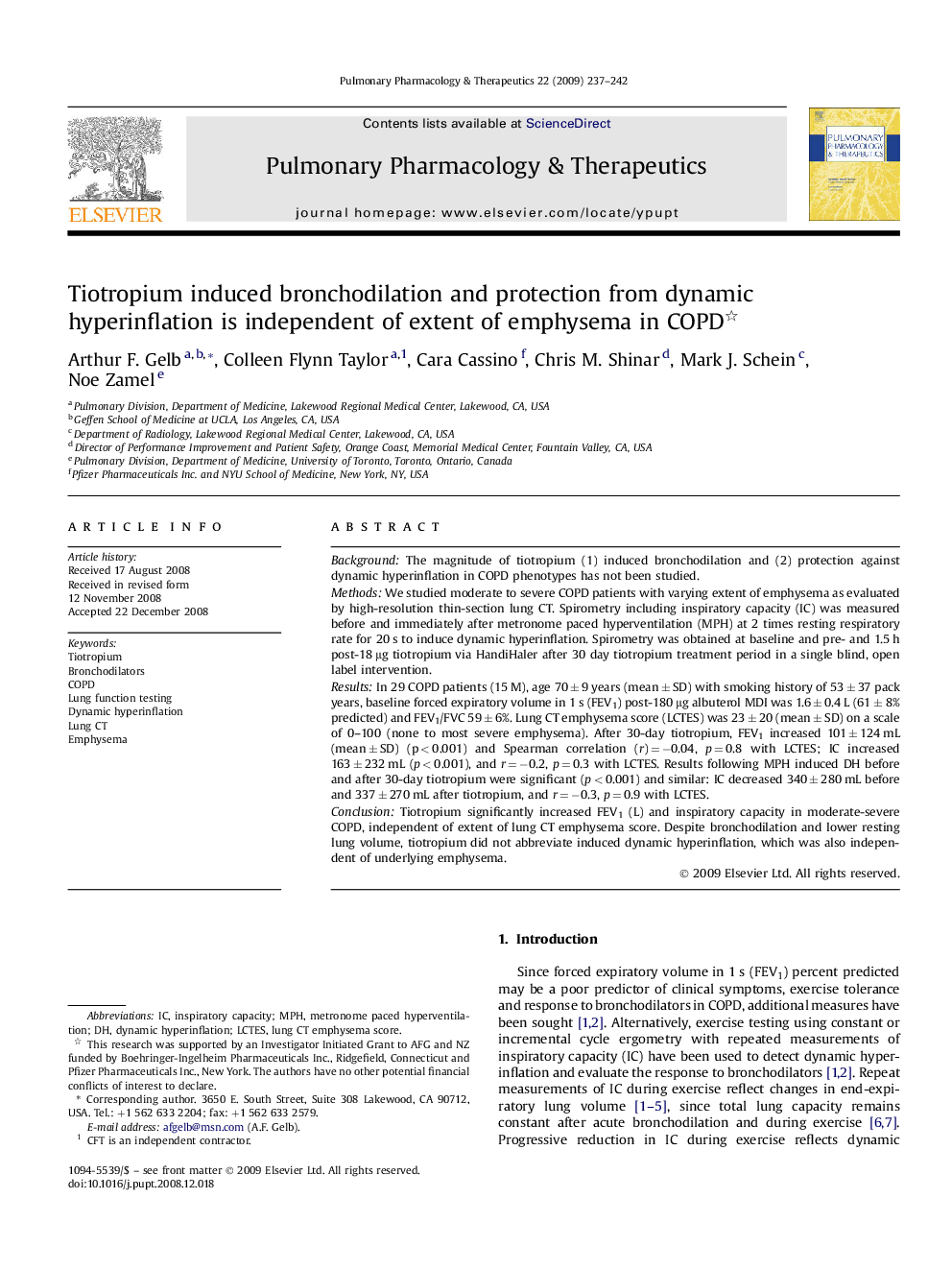| Article ID | Journal | Published Year | Pages | File Type |
|---|---|---|---|---|
| 2567601 | Pulmonary Pharmacology & Therapeutics | 2009 | 6 Pages |
BackgroundThe magnitude of tiotropium (1) induced bronchodilation and (2) protection against dynamic hyperinflation in COPD phenotypes has not been studied.MethodsWe studied moderate to severe COPD patients with varying extent of emphysema as evaluated by high-resolution thin-section lung CT. Spirometry including inspiratory capacity (IC) was measured before and immediately after metronome paced hyperventilation (MPH) at 2 times resting respiratory rate for 20 s to induce dynamic hyperinflation. Spirometry was obtained at baseline and pre- and 1.5 h post-18 μg tiotropium via HandiHaler after 30 day tiotropium treatment period in a single blind, open label intervention.ResultsIn 29 COPD patients (15 M), age 70 ± 9 years (mean ± SD) with smoking history of 53 ± 37 pack years, baseline forced expiratory volume in 1 s (FEV1) post-180 μg albuterol MDI was 1.6 ± 0.4 L (61 ± 8% predicted) and FEV1/FVC 59 ± 6%. Lung CT emphysema score (LCTES) was 23 ± 20 (mean ± SD) on a scale of 0–100 (none to most severe emphysema). After 30-day tiotropium, FEV1 increased 101 ± 124 mL (mean ± SD) (p < 0.001) and Spearman correlation (r) = −0.04, p = 0.8 with LCTES; IC increased 163 ± 232 mL (p < 0.001), and r = −0.2, p = 0.3 with LCTES. Results following MPH induced DH before and after 30-day tiotropium were significant (p < 0.001) and similar: IC decreased 340 ± 280 mL before and 337 ± 270 mL after tiotropium, and r = −0.3, p = 0.9 with LCTES.ConclusionTiotropium significantly increased FEV1 (L) and inspiratory capacity in moderate-severe COPD, independent of extent of lung CT emphysema score. Despite bronchodilation and lower resting lung volume, tiotropium did not abbreviate induced dynamic hyperinflation, which was also independent of underlying emphysema.
